Awesome! I'll have to swing over to Guelph and take a look.
Last night I was making some Chili in our insta-pot and as I released the steam I couldn't help but want a steam whistle attachment for it, some googling resulted in nothing available. How awesome would a small steam whistle be that also smelled like Chili?!
So it looks like this is going to be my next "loco". Nickd, what can you tell me about it? Bonus points for interior shots and a source for the OOP Kato RDC1 in N scale.

In reply to kazoospec :
This will get you started-
https://en.m.wikipedia.org/wiki/Budd_Rail_Diesel_Car
And the Kato RDC is like hen's teeth. I'd jump on this one and just repaint it-
So the Budd RDC was kind of a masterstroke when it came out. Now, the idea of self-propelled railcars was not new. Since the earliest days of the internal combustion engine, there had been self-propelled railcars, nicknamed doodlebugs. Budd, McKeen, J.G. Brill, GE, Fairbanks-Morse, EMC/EMD and Pullman had all produced various doodlebugs. These were essentially a combination baggage car/passenger car with a cab and controls on one end. The early ones used gasoline engines with a mechanical drive, then later ones transitioned to diesel power and then later on they went to electric drive. The idea was to save money by using them on branch lines to handle light passenger and freight traffic, where it made no financial sense to run a steam engine with a passenger car or two. Doodlebugs operated by themselves but could also tow a single passenger car or combine. The downside to doodlebugs was that they were lacking in flexibility. They did not have MU capability, so if you needed a longer train than a doodlebug and "trailer" you were screwed. Also, they only had a cab, on one end, so you needed a way to turn them at one end of the line.
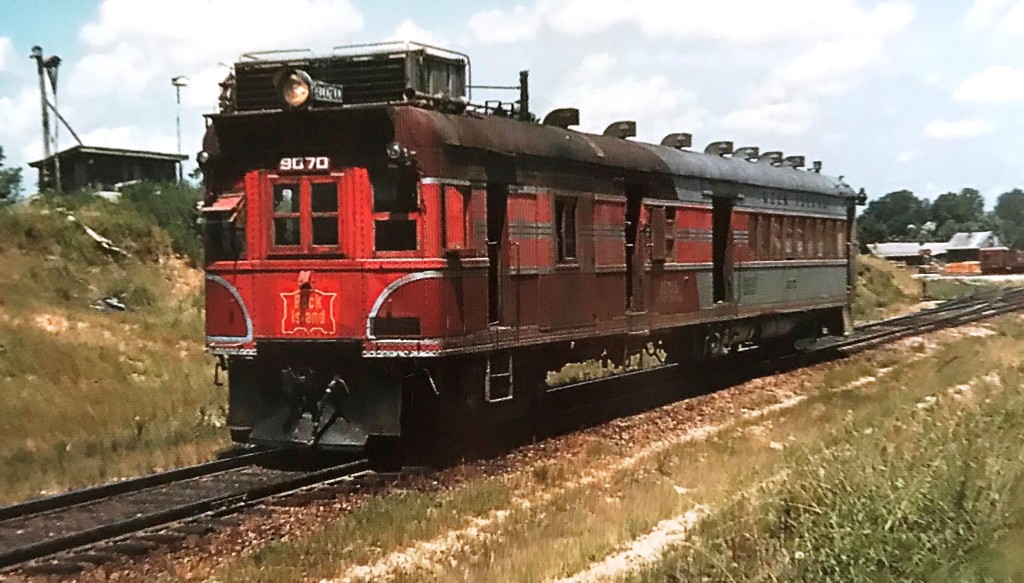
You also had EMUs, or Electric Multiple Units. These had first appeared in the 1890s. They could be used in multiple units, so if you needed a longer train, you just added more on. They had cabs on both ends, so you didn't need to turn them. The crew just went to the other end of the car or train and took control on that end and headed off in a different direction. The downside with the EMU was that you needed either overhead catenary or a third rail to operate them. When you are trying to cut costs, spending the money on electrification of branch lines doesn't make a whole lot of sense.
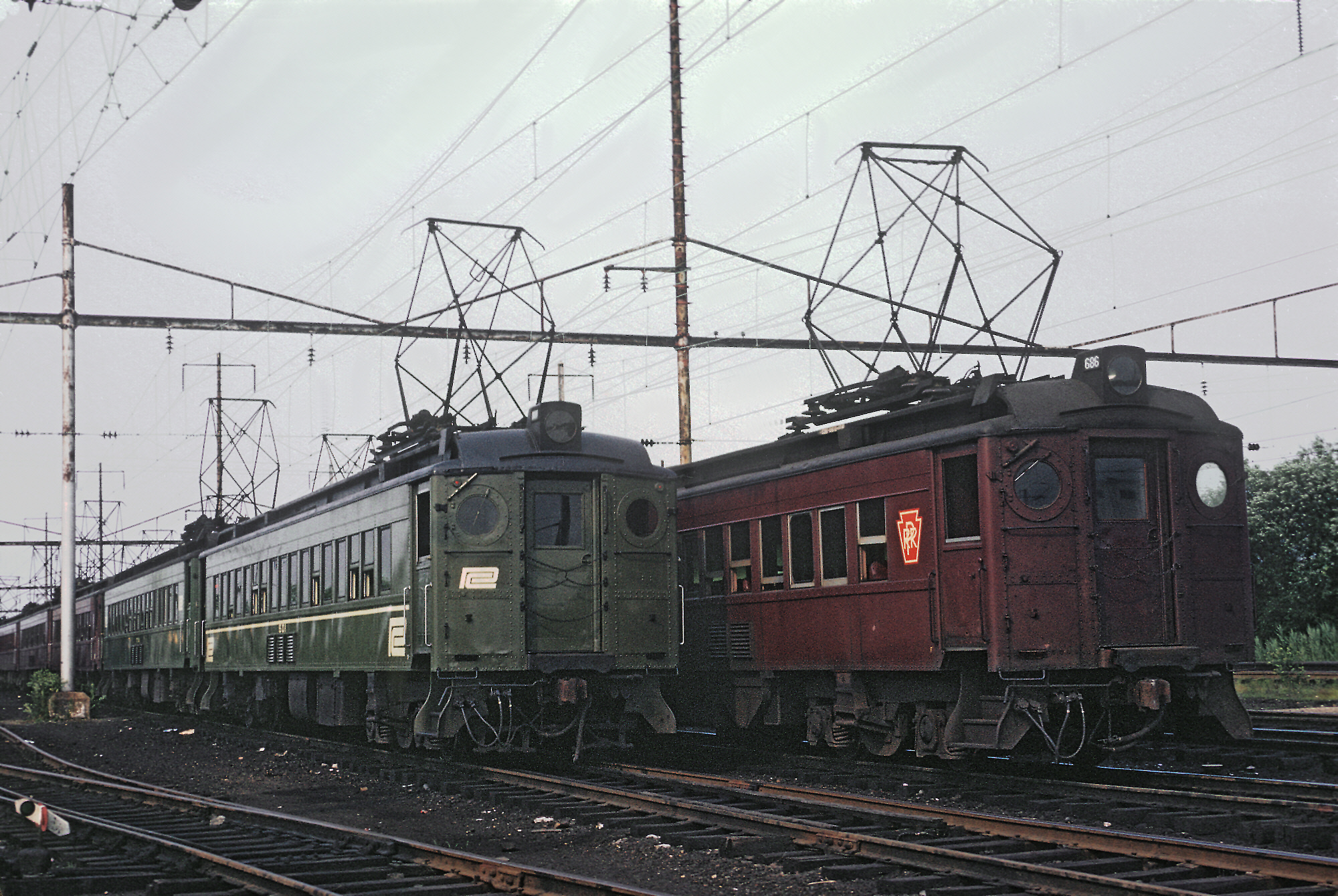
So, in 1949, as the passenger market went into freefall from it's high in 1944, Budd Company introduced the RDC, or Rail Diesel Car. The RDC was the best of both worlds: it had the flexibility and versatility in use of an EMU, while not needing the expensive electrical infrastructure like a doodlebug.

The body was the same as most Budd-built passenger cars and EMUs, except for a bulge in the roof that contained the radiator for the engine. Underneath the floor was a pair of GM/EMD 110-series engines. Following EMD naming convention, the 110 displaced 110ci per cylinder, and was a 275hp supercharged 3-stroke inline 6. One of the big advancements incorporated was the torque converter drive, rather than a gearbox like in old doodlebugs. Mechanical drive was used because it was cheaper, lighter and easier to package than a big generator. It transmitted power via driveshafts down to a right angle gearbox mounted in the trucks and powered the inboard axle on each truck, giving it a 1A-A1 configuration. Most importantly, the RDC included Multiple Unit capability, so you could hook up a bunch of them and run them together, and a control stand at each end, so you could run it in either direction without needing turning facilities.
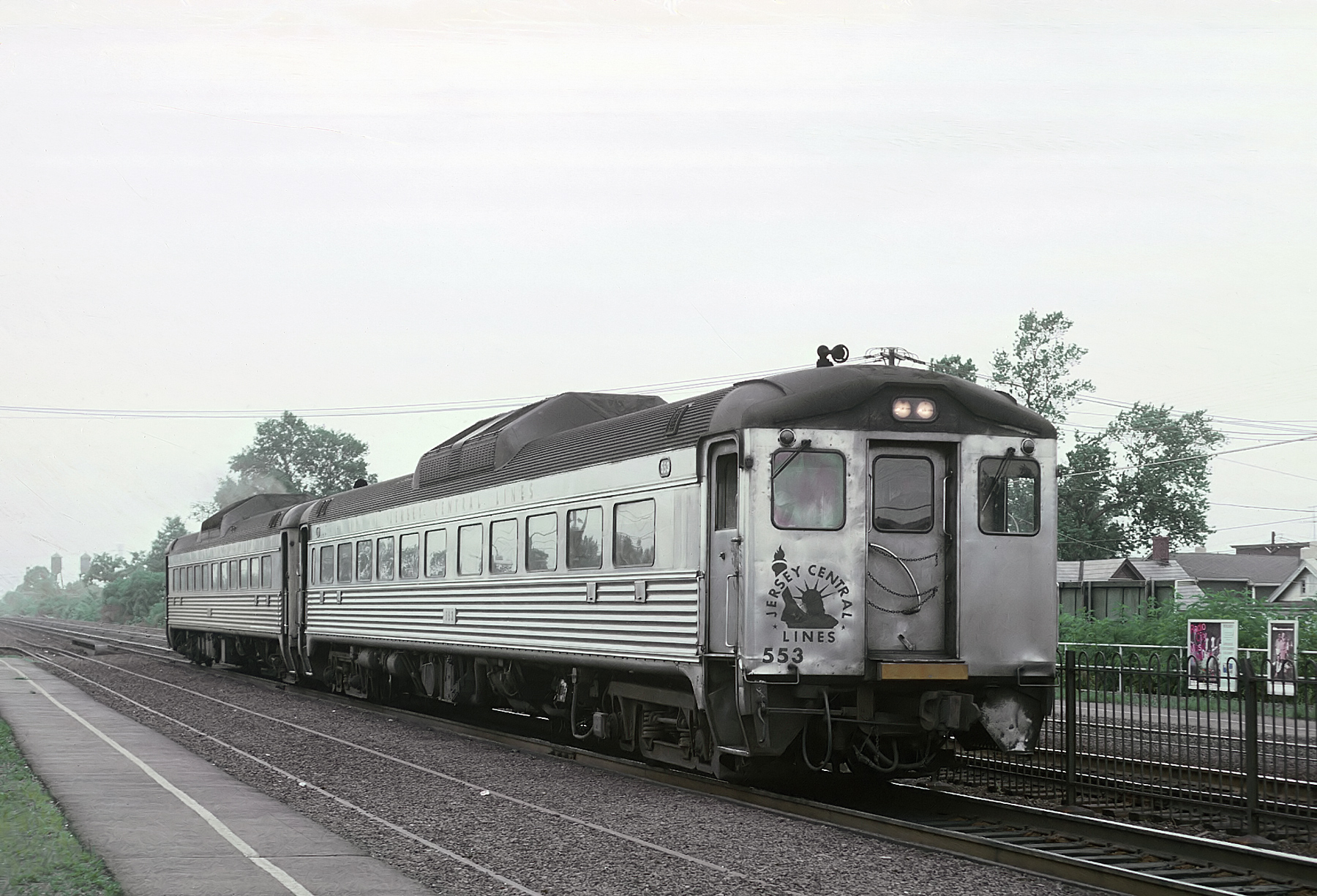
Budd would build 398 RDCs for 32 railroads between 1949 and 1962. Although intended for branch line service, many railroads rapidly pressed them into commuter service and short-haul passenger usage. Rock Island even used them in long-distance passenger service, despite Budd saying not to. Because of how cheap they were to operate, on many railroads the RDCs were the last passenger service operating. Many RDCs lasted into the 1980s and 1990s in the US, while some are still in use up in Canada. Canadian National even has one, #1501, that they have set up with all the sensor and telemetry gear to use as a track inspection vehicle.

In reply to Recon1342 :
My concern on that one is the description doesn't match what appears to be a stock photo. It says it's an RDC-4, which, if my minimal early research is right, has a totally different exterior layout from the RDC-1 that CN uses. I'll have to cover up some windows if I can get an RDC-1, but that seems way easier than cutting in new windows and covering cargo doors, which I'd have to do if I understand the RDC-4 layout correctly. If the description is wrong and the photo is right, that would be perfect.
Nickd: The CN telemetry unit is what I'm trying to model. Thanks for the info!
Despite being referred to as just RDCs, no matter the configuration, Budd actually catalogued different configurations.
The most common was the RDC-1. It was 85 feet in length, 550hp, dual control stands and was passenger-only, with 90 passenger seats. If you see an RDC, chances are, it's an RDC-1.

The RDC-2 was still 550hp and 85 feet in length, but it was a combine, like the doodlebugs of yore. It had a 17' baggage section at one end and then 70 passenger seats behind the baggage area. These are recognizable by the windowless segment at one end, where the baggage compartment is.

The RDC-3 had 48 passenger seating, the 17' baggage compartment and then added a small Railway Post Office ahead of the baggage compartment for picking up, dropping off and sorting mail en route. The extra Dutch door between the large baggage door and the crew compartment door at the front is the givewaway here, along with the longer windowless segment.

The rarest of all the variants was the RDC-4. It was 73' in length, had no passenger seating at all, just a large RPO at the front and a baggage compartment in the rear half.

And then, the oddest of them was the RDC-9. The RDC-9 only had a single engine for 300hp power one axle (making it a 1A-2), had no control stands whatsoever and sat 94 people. It was referred to as either a "trailer" or "center car" and the idea was that if a railroad was frequently operating RDCs in sets of 3, they could buy RDC-9s for the center and save money because they weren't paying for two control stands and an engine that they wouldn't need. Boston & Maine was the sole customer, buying thirty of them.

In reply to kazoospec :
Inside views of track telemetry units are kind of difficult to find. But it basically looks like a bunch of banks of computer screens. Kind of like what they always show the interior of EWACS birds looking like in movies.
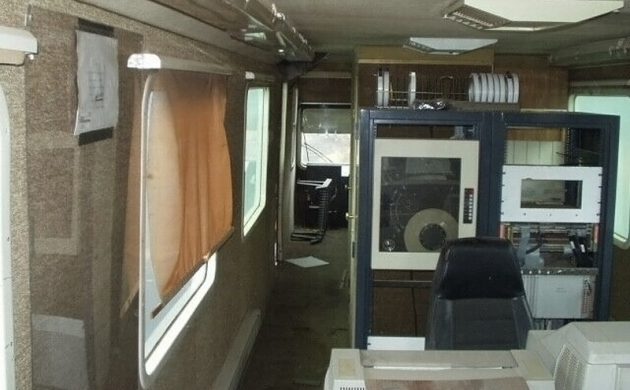
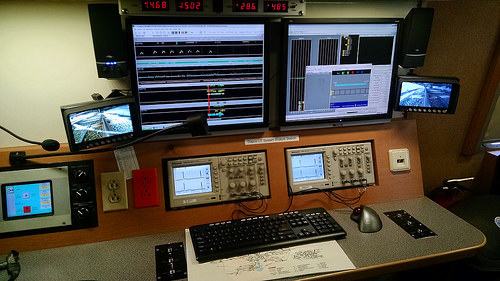
One of the odder uses of RDCs (the oddest is still NYC's "Black Beetle") was the New Haven's Roger Williams. A child of the McGinnis era of the New York, New Haven & Hartford, the idea was to make a new streamlined, affordable-to-operate train. RDCs were viewed as decidedly unsexy though, and so New Haven came up with an idea that used two RDC-1s (called RDC-A in this application) on each end with 4 RDC-9s (called RDC-B in this application). The RDC-As on the ends had a streamlined cab that was somewhere between an Alco FA and a Fairbanks-Morse C-Liner grafted onto the end, although the original drawing actually called for more of an EMD bulldog nose. The drawings also showed the ventilator hump being removed entirely, but that was not feasible. Since was this also the era of railroads being obsessed with high speed rail and low centers of gravity, Budd installed them with dual 300hp engines per car, for a 50hp and 25mph top speed bump, and lowered the floors of the cars 7". And since New Haven planned to run it into Grand Central, they had to be third-rail capable, so they had small traction motors and third-rail shoes added to the normally unpowered axles.
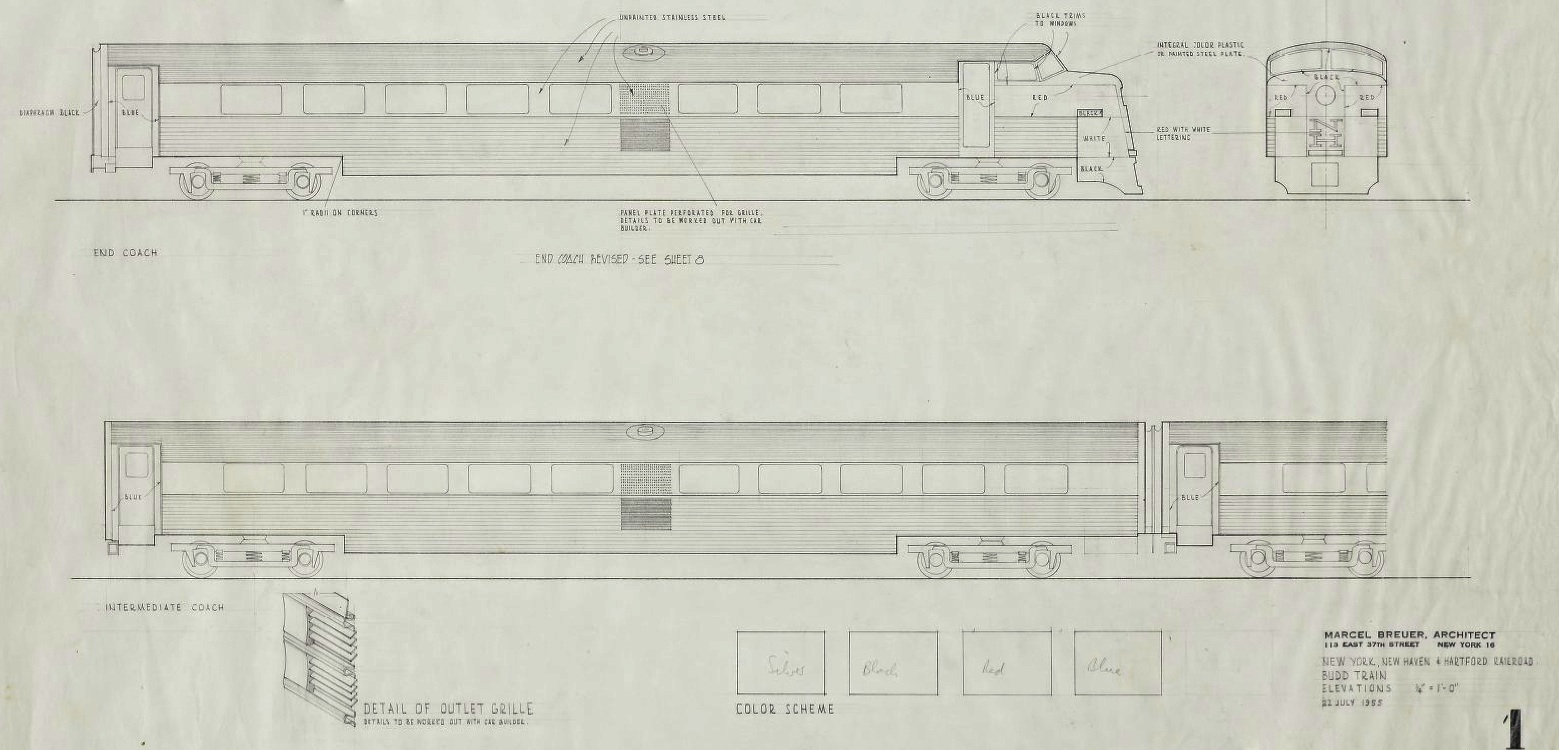
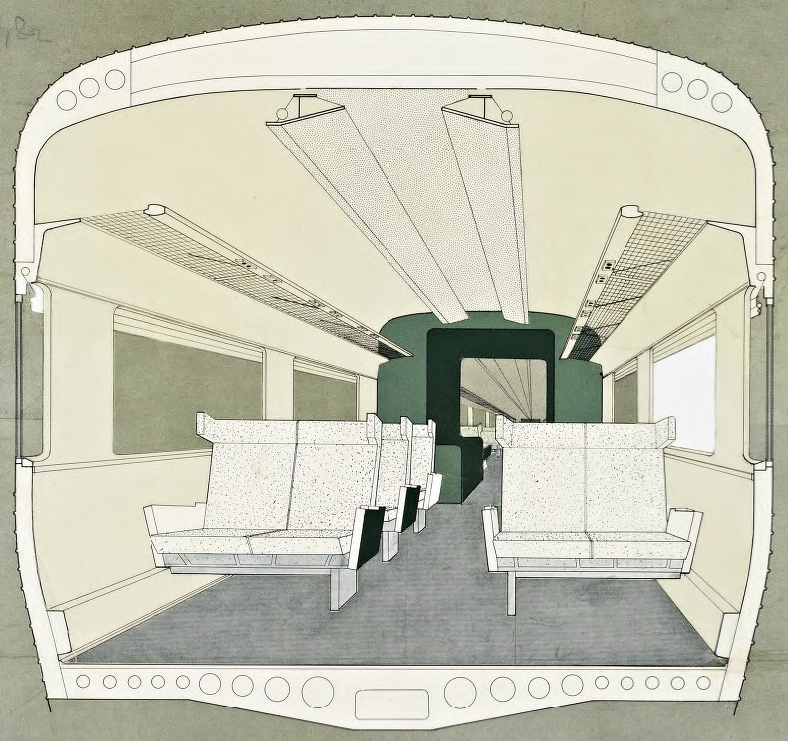
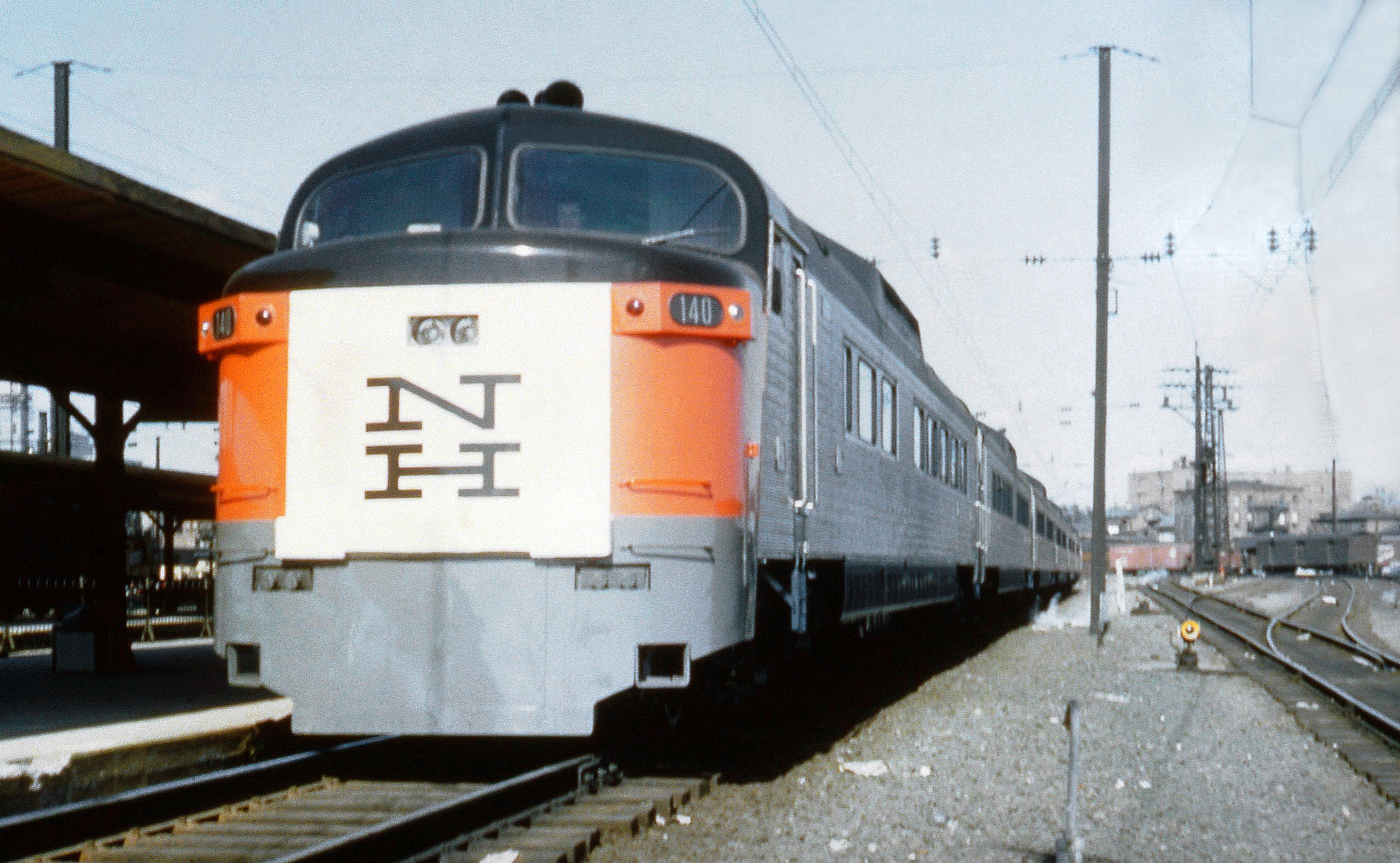

Introduced in 1957, the Roger Williams was never really a success. The 3rd-rail electric operation never worked properly (New Haven had tried similar jerry-rigging on the Fairbanks-Morse-built John Quincy Adams to similar success) and the 6-car set was soon broken up and downgraded from high-speed long distance service to local service. Still, they managed to survive not only through the Penn Central merger but through both the Rainbow Era and Phase I Amtrak eras and into Phase 2 livery before being retired.




Today, both of the RDC-As and one RDC-B are preserved in Danbury, owned by a private owner, making them a rare survivor of high-speed lightweight train efforts.

The oddest of all was definitely New York Central's M-497, the "Black Beetle".
Two diesels on your RDC aren't enough power? Just streamline the nose and plop a pair of GE J47 turbojets on the roof. Find a straight stretch of track, and smash the high-speed rail record with a run of 183.6 mph. (It still stands).
https://en.m.wikipedia.org/wiki/M-497_Black_Beetle
I think I'm gonna build one in HO scale...
Recon1342 said:The oddest of all was definitely New York Central's M-497, the "Black Beetle".
I think I'm gonna build one in HO scale...
Here I go starting E36 M3 again. ![]()
Budd also said not to tow RDCs or tow with RDCs. Towing a passenger car with an RDC would cause excessive strain on the gearboxes, driveshafts and torque converter drives and would cause failures. Towing them with the engine off would burn up the transmission, like when you flat-tow a car with an automatic transmission engine off. So Budd would void the warranty if you towed or towed with RDCs. Of course, railroads immediately went and ignored that warning and did it.
I can't find photos of it, but Jersey Central would tow a heavyweight car behind a pair of RDCs, and Chicago & Eastern Illinois would tow a streamlined Pullman behind an RDC. Rock Island was also a fan of towing cars with RDC, as was Quebec, North Shore & Labrador (they reportedly pulled an ex-Wabash dome car with an RDC) and Long Island liked to haul mail cars with RDC-1s (rather than buy an RDC-3 or RDC-4).
As for towing an RDC, I've seen plenty of photos of that. Railroads liked to hook an RDC into a passenger train so that if they had passengers that needed to go to a different destination, rather than run a second train they could just unhook the RDC at a spot where the destinations diverged and run the few people up there on an RDC.
You can just make out the radiator bulge on the RDC at the rear of this NYC train. New York Central preferred to call RDCs "Beeliners" for whatever reason.

A CP 4-4-4 Royal Jubilee towing an old baggage car, a Budd RDC and a heavyweight passenger car in one of the most motley grab-bag collections of a consist I've ever seen.

CP train #629 with two RDCs in the middle.


Here's a sight: A CP Royal Jubilee doubleheading with a CP Hudson, a "buffer car", two RDCs and an assortment of passenger cars.

A Pacific Great Eastern doodlebug (looks like it might be a GE-Wason) towing an outside-braced boxcar.

Union Pacific DC-3 was an ex-Detroit & Mackinac that they rebuilt into a rail geometry car. It wasn't delivered with that awesome front end, that was the result of a UP rebuild. Sadly it was retired and scrapped. Man, it looks awesome though. Reminds me of some of those wacky 1970s RVs.

kazoospec said:Recon1342 said:The oddest of all was definitely New York Central's M-497, the "Black Beetle".
I think I'm gonna build one in HO scale...
Here I go starting E36 M3 again.
Not really. This one's been on my radar for many years...
In reply to slowbird :
Like a '60 Chevy wagon?

Or a '58 Poncho wagon?

Or a Dodge A-100 pickup?

Or a '56 Buick?

I particularly like this New Haven-owned Jeep FC


In reply to slowbird :
Let's talk about the original "weird Hi-rail stuff" then.
In the 1930s, the Rio Grande Southern RR was facing the loss of mail contracts in some of the towns along the line. It was expensive to run a steam locomotive for the limited amount of traffic they had. Enter the "Motor" in RGS parlance. Developed as a way to handle light service, the first motor was so successful it paid for itself in three weeks. What is this mysterious motor, you ask? "Motor" is the RGS' name for the famed Galloping Geese!
https://en.m.wikipedia.org/wiki/Galloping_Goose_(railcar)

In reply to Recon1342 :
What's most amazing about the Geese is that they used Buicks and Pierce-Arrows. Fords or Chevys you would expect. Luxury cars? Not so much.
Yes, all of this rules! I really love the galloping goose.
I also want to get one of the Bachmann hi-rail buses.
Related:

You'll need to log in to post.